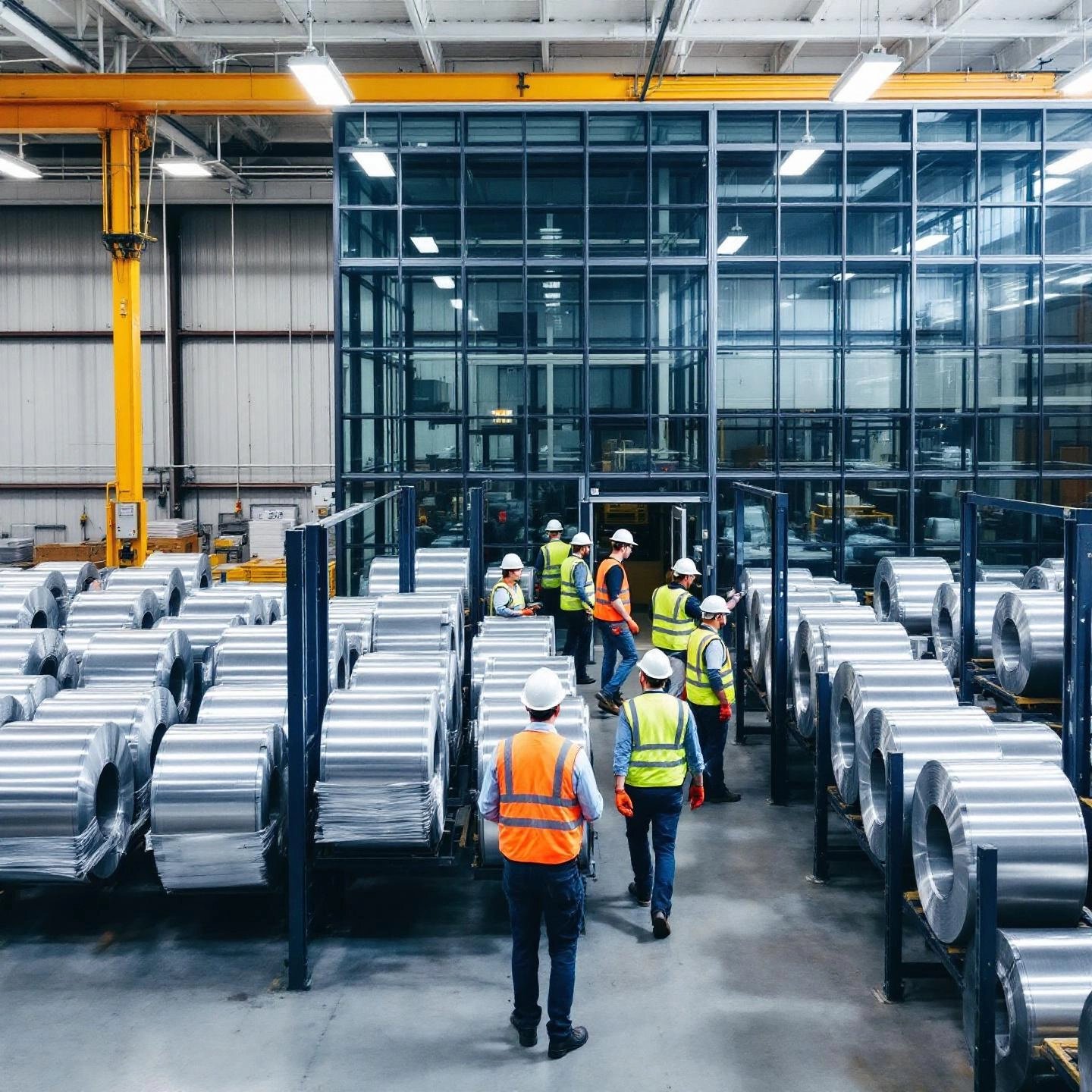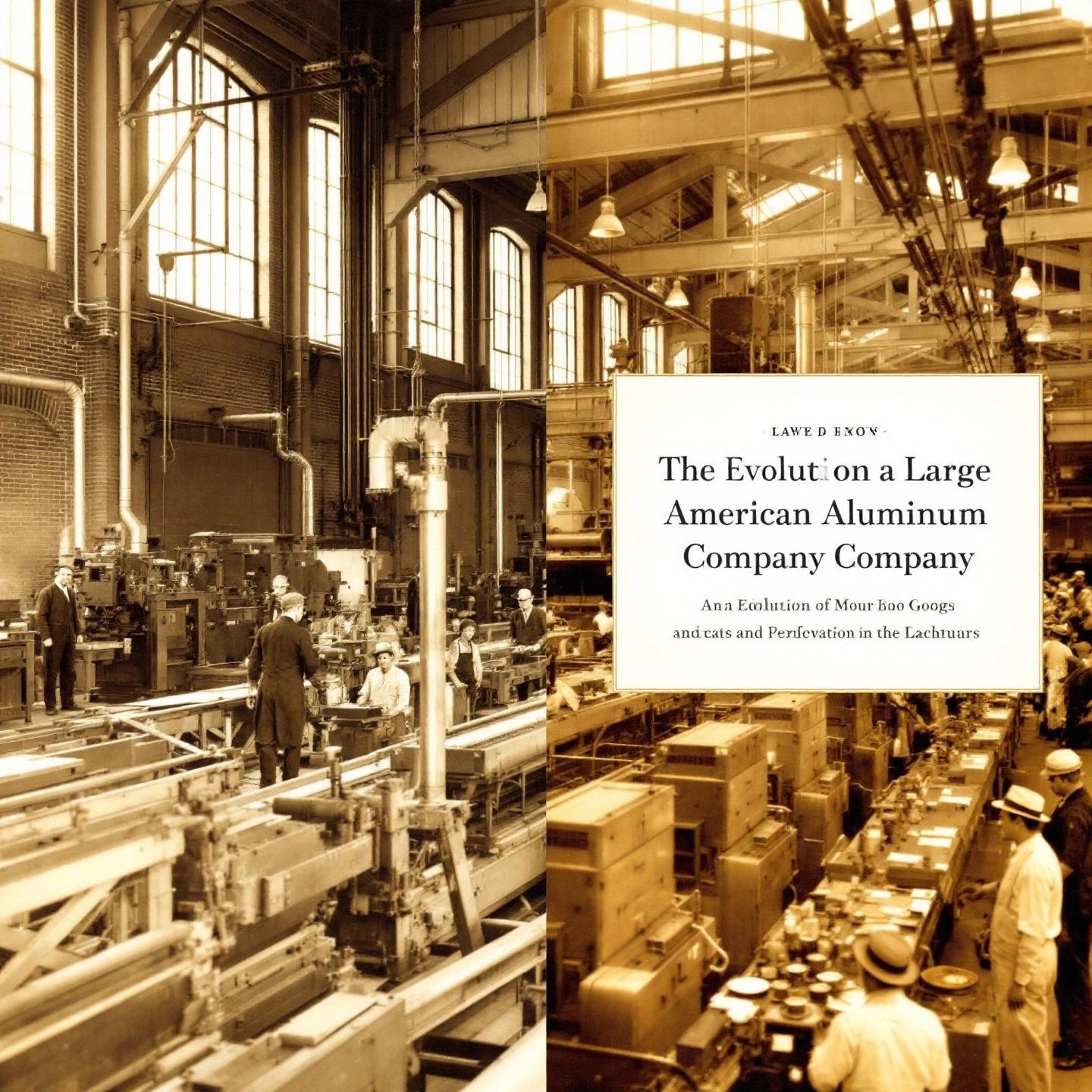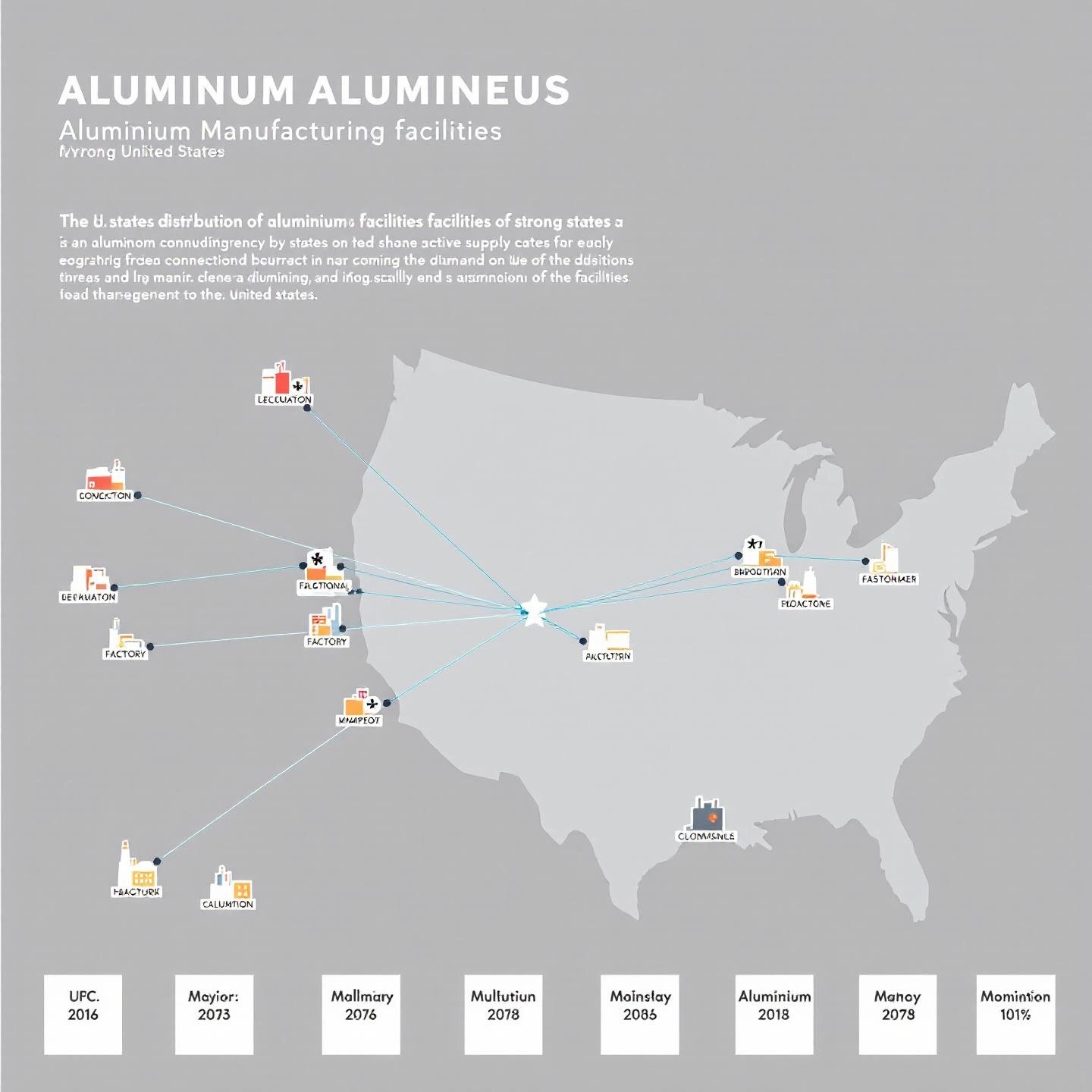
When you think about the backbone of American manufacturing, companies like Kaiser Aluminum often come to mind. But what makes Kaiser Aluminum stand out in a crowded industry? Imagine the complex engineering behind a commercial jet or the precision required for automotive safety components—chances are, Kaiser Aluminum played a role in making those innovations possible.
Kaiser Aluminum Corporation is recognized as a premier producer of semi-fabricated specialty aluminum products across North America. With a reputation built over decades, the company is trusted by customers for its commitment to quality, innovation, and reliability. Headquartered in Franklin, Tennessee, Kaiser Aluminum operates a network of advanced facilities, supplying high-performance aluminum products to demanding sectors such as aerospace, automotive, defense, and general engineering. This reach and expertise have positioned the company as a preferred supplier, customer, and employer within the industry.
Sounds complex? Let’s break it down. The company’s core business revolves around transforming raw aluminum into products that meet strict technical requirements. These products are vital for:
But Kaiser Aluminum isn’t just about products—it’s about legacy. Founded in the mid-20th century, the company’s history is intertwined with pivotal moments in American industry, from postwar expansion to modern-day technological breakthroughs. Over the years, it has continued to grow, adapt, and innovate, building a culture that values bold ideas and rewards initiative.
This article will take you on a comprehensive journey through Kaiser Aluminum’s corporate structure, the specialty products it manufactures, its widespread plant locations, and the diverse career opportunities it offers. Whether you’re interested in the company’s history, its role in advanced manufacturing, or what it’s like to work there, you’ll find valuable insights in the chapters ahead.

Ever wonder how an ambitious idea can transform an entire industry? The story of the Kaiser Aluminum Company is a testament to bold vision, relentless innovation, and resilience through changing times. Let’s step back and explore how this American industrial icon became a cornerstone of modern manufacturing.
It all began in 1946 with Henry J. Kaiser—a name already synonymous with large-scale engineering feats like the construction of the Hoover Dam and Grand Coulee Dam. Fresh from his pivotal role in World War II shipbuilding, Kaiser saw the potential of aluminum as a material that could drive postwar progress. He founded the Kaiser Aluminum company by leasing, and later purchasing, government-owned aluminum facilities in Mead and Trentwood, Washington. Skeptics doubted his foray into metals, but within the first year, the Mead smelter alone produced over 100 million pounds of aluminum and employed more than 2,000 people (HistoryLink.org).
Throughout the decades, the company—often referred to as Kaiser Aluminum Corp—marked its presence during crucial moments in American history. Here are some defining milestones:
What does this legacy mean for the company’s current operations and values? You’ll notice that Kaiser Aluminum’s history is woven into its commitment to quality, innovation, and ethical business practices. The company’s experience navigating economic challenges, environmental responsibilities, and technological change has fostered a culture of agility and continuous improvement. For example, it was among the first to adopt digital manufacturing technologies, boosting efficiency and reliability across its facilities.
From supplying critical materials for defense and aerospace to pioneering recycling and environmental initiatives, the Kaiser Aluminum company continues to evolve—always building on its rich heritage. This legacy not only shapes its products but also the trust it has earned with customers, employees, and communities nationwide.
As we move forward, let’s take a closer look at what Kaiser Aluminum produces today and how its fabricated products division powers high-performance industries across North America.
When you hear the term “fabricated products,” do you picture complex machinery or sleek car parts? At Kaiser Aluminum, fabricated products are the heart of what they do—transforming raw aluminum into specialized forms engineered for top performance. But what exactly does this mean, and why does it matter for industries like aerospace, automotive, and defense?
Fabricated products refer to aluminum that’s been shaped, processed, or assembled to precise specifications for a particular use. Imagine sheets, plates, rods, bars, and extrusions—each tailored for strength, durability, and unique applications. Kaiser Aluminum Fabricated Products LLC focuses on these advanced materials, serving customers who need more than just raw metal. Instead, they rely on engineered solutions that meet demanding standards for quality and consistency.
Ever wondered what makes some aluminum products suitable for a jet wing while others are perfect for beverage cans? The answer often lies in the alloy. “Common alloy” refers to aluminum grades that balance strength, corrosion resistance, and workability, making them versatile for various high-volume applications. At a Kaiser Aluminum common alloy plant, these alloys are processed into coil, sheet, and plate—materials that form the backbone of countless products in everyday life and advanced engineering.
Kaiser’s product portfolio is both broad and highly specialized. Here’s a quick breakdown of their primary offerings and the industries they serve:
These products aren’t just generic metal forms—they’re designed to deliver superior performance, consistency, and cost efficiency. For example, the KaiserSelect® line is engineered for tighter tolerances and enhanced surface quality, supporting customers who can’t afford a single flaw in their production process (Kaiser Aluminum).
Think about the materials used in a spacecraft, a modern fighter jet, or a crash-resistant car chassis. Each application demands aluminum with specific mechanical properties, reliability, and traceability. That’s why aerospace, defense, and automotive manufacturers turn to Kaiser Aluminum for:
It’s not just about making aluminum; it’s about making it better—tailored for the most demanding environments.
While Kaiser Aluminum leads in North America, the global aluminum industry is vast and interconnected. For instance, companies like Shengxin Aluminum in China operate expansive extrusion facilities, producing a wide range of profiles for international clients. Their advanced capabilities—spanning from high-capacity extrusion to precision machining—demonstrate the worldwide demand for innovation, quality, and customization in aluminum products. This global perspective highlights how manufacturers collaborate and compete to meet evolving industry needs.
As we explore further, you’ll see how Kaiser’s network of locations across the United States supports its ability to deliver these sophisticated products efficiently to customers nationwide.

When you picture a company that supplies advanced materials to aerospace, automotive, and industrial leaders, you might wonder: how do they get their products where they’re needed, right on time? The answer lies in a well-planned network of facilities. Kaiser Aluminum’s operational footprint stretches across the United States, with each location playing a specialized role in supporting customers and driving efficiency.
Imagine you’re an automotive engineer in Michigan or an aerospace supplier in California. Having a Kaiser Aluminum facility nearby means faster delivery, more responsive service, and the ability to collaborate closely on custom solutions. This network isn’t just about geography—it’s about flexibility, risk management, and the capacity to meet diverse industry needs. By distributing production across the country, Kaiser can:
Each facility brings unique expertise, whether it’s rolling aerospace-grade plate, drawing precision rods, or pioneering advanced manufacturing techniques. Let’s take a closer look at some of the key kaiser aluminum locations and what makes them stand out.
| Plant Location (City, State) | Noted Specialization or Primary Output |
|---|---|
| Spokane Valley, WA (Trentwood) | Plate and sheet for aerospace and general engineering applications |
| Newburgh, IN (Warrick) | Coil for beverage and food packaging applications |
| Sherman, TX | Extruded shapes, rod, bar, tube, and wire for aerospace, automotive, and industrial markets |
| Kalamazoo, MI | Extruded products for automotive and industrial applications |
| Columbia, NJ (Imperial Machine & Tool Co.) | Multi-material advanced manufacturing methods and techniques |
| Ten Additional Extrusion/Drawing Facilities (Various Locations) | Products for aerospace, custom automotive, and industrial applications |
For example, the kaiser aluminum sherman tx plant is a hub for extruded products, serving industries where precision and reliability are non-negotiable. Meanwhile, kaiser aluminum kalamazoo specializes in automotive and industrial extrusions, supporting the heart of America’s manufacturing belt. Each site is equipped with teams of engineers, metallurgists, and technicians collaborating to deliver over a billion pounds of product annually.
This distributed approach does more than just streamline logistics. It also means that Kaiser Aluminum is closely tied to the economic health of many regions, providing stable employment and investing in local infrastructure. Whether you’re a supplier, customer, or job seeker, the presence of a Kaiser facility nearby can open doors to new opportunities and partnerships.
As you explore the next chapter, you’ll see how flagship plants like Warrick and Spokane exemplify the company’s commitment to both operational excellence and community impact.
When you picture the scale and complexity of modern aluminum manufacturing, you might wonder—what does it take for a single facility to make a real difference, both in industry and in its local community? Let’s take a closer look at two of the most pivotal sites in the Kaiser Aluminum network: the Warrick Rolling Mill in Indiana and the Trentwood Rolling Mill in Spokane, Washington. Each plant has a unique role, but both are central to the company’s success and to the regions they call home.
Imagine a facility where innovation meets tradition—this is the story of kaiser aluminum warrick. Located in Newburgh, Indiana, this rolling mill was acquired by Kaiser Aluminum in 2021 with an eye toward future growth. The plant specializes in producing aluminum coil, a critical input for food and beverage packaging. You’ll find its products in everyday items like cans, lids, tabs, and ends for beverages and packaged foods.
This expansion means more than just enhanced production—it signals long-term stability for the region’s workforce and positions the plant as a mainstay in the packaging supply chain for years to come.
Now, picture the kaiser aluminum spokane (Trentwood) facility in Spokane Valley, Washington—a site with a storied past and a cutting-edge present. This plant is the cornerstone for producing aluminum plate and sheet, essential for aerospace and general engineering applications. If you’ve ever flown in a commercial jet or seen a modern defense vehicle, there’s a good chance components started at Trentwood.
Beyond the numbers, the Spokane plant’s influence stretches into the community—supporting education, local businesses, and long-term economic vitality.
So, what do these two facilities reveal about Kaiser Aluminum’s approach? Both the Warrick and Spokane plants exemplify how strategic investments and specialized production can drive industry leadership while anchoring local economies. Whether it’s the food and beverage packaging that fills supermarket shelves or the aerospace materials that soar above the clouds, these plants are more than manufacturing sites—they’re engines of innovation and prosperity.
Next, let’s explore how Kaiser Aluminum’s status as a publicly traded company creates opportunities for investors and stakeholders alike.
Ever considered what it means when a company like Kaiser Aluminum is publicly traded? Imagine you’re an investor seeking a stake in the future of advanced manufacturing—or just someone curious about how financial markets intersect with American industry. Kaiser Aluminum Corporation’s presence on the Nasdaq (under the ticker symbol KALU) opens the door for both institutional and individual investors to participate in its journey.
When a company is publicly traded, its ownership is divided among shareholders who buy and sell stock on the open market. For Kaiser Aluminum, this means:
For the public, this transparency helps build trust, as anyone can review the company’s quarterly earnings, annual reports, and key announcements. This structure also means that Kaiser Aluminum’s business decisions and performance are closely watched by analysts, investors, and regulators alike.
Curious about how kaiser aluminum stock is performing? You can easily find up-to-date pricing, historical trends, and analyst commentary on financial news platforms such as Yahoo Finance. For example, recent data shows that the stock price has fluctuated within a 52-week range, reflecting both market trends and company-specific developments. Key metrics—like price-to-earnings ratio, dividend yield, and market capitalization—are also available to help you make informed decisions.
If you’re looking for the most accurate and current updates—such as earnings releases, annual reports, and shareholder communications—the kaiser aluminum investor relations page is your go-to resource. Here, you’ll find:
Staying connected through these official channels ensures you’re always in the loop on key developments, whether you’re a current shareholder or simply evaluating the company as a potential investment.
As you explore career opportunities or consider investing, understanding Kaiser Aluminum’s public company status gives you a clearer picture of its financial health, leadership, and long-term vision. Next, let’s look at what it’s like to build a career with this industry leader—and the opportunities that await across its nationwide network.

When you think about launching or advancing your career, what matters most to you? Is it a supportive team, meaningful work, or the chance to learn and grow? At Kaiser Aluminum, employees describe the workplace as more than just a job—it’s a community where people are valued, respected, and empowered to reach their full potential. If you’re exploring kaiser aluminum careers, here’s what you can expect when you join the team.
Imagine walking into a facility where everyone—from operators to engineers to managers—works together toward a common goal. That’s the everyday reality at Kaiser. Employees consistently mention the sense of belonging and camaraderie that defines the company’s culture:
This collaborative spirit is more than talk—it’s embedded in daily operations, from onboarding to ongoing training. New hires receive extensive support, and mentorship is a common thread, with experienced team members helping others grow into new roles and responsibilities.
Whether you’re interested in engineering, skilled trades, production, management, or technical support, Kaiser offers a wide range of career paths. Employees have moved from shop floor positions to managerial roles, and from maintenance to engineering, often while pursuing further education. Here are just a few examples:
Employees highlight the ability to shape their own path, with support from mentors and a management team that encourages learning and advancement.
What sets Kaiser Aluminum apart as an employer? Beyond competitive pay and benefits, the company invests heavily in professional development and lifelong learning. Here’s how:
One employee shared, "My proudest professional accomplishment at Kaiser was graduating from the Women’s Leadership Program. The program allowed me to build friendships and learn management skills that I use every day." – Debbie, Metallurgist
Others point to the satisfaction of helping new hires succeed or moving into new roles thanks to the encouragement and resources provided by the company.
So, what makes Kaiser Aluminum an attractive employer? It’s the combination of a supportive culture, clear growth opportunities, and a commitment to helping every team member succeed. If you’re seeking a workplace where your contributions are recognized and your career can evolve, Kaiser Aluminum offers a path forward.
Ready to take the next step? In the following section, you’ll find practical tips for finding and applying to jobs at Kaiser Aluminum locations nationwide.
Looking for a rewarding career in American manufacturing? Wondering how to find the right role at a company known for its supportive culture and industry leadership? Whether you’re just starting out or seeking a new challenge, exploring kaiser aluminum jobs can open doors to a range of fulfilling opportunities across the nation.
Sounds complex? Not at all. Kaiser Aluminum makes it simple for job seekers to explore openings and apply. Here’s how you can get started:
Imagine working at one of the company’s flagship facilities—each with its own unique culture and specialization:
Ever wondered what sets successful applicants apart? Based on employee testimonials and hiring practices, here’s what the company values most:
If you’re ready to take the next step, visiting the company’s careers page is the best way to discover openings and start your application. In the coming section, we’ll reflect on how Kaiser Aluminum’s workforce and operations contribute to the broader landscape of American manufacturing.

When you look at the big picture, what does Kaiser Aluminum really mean to American industry? Imagine the ripple effect of a single company whose products end up in everything from fighter jets and beverage cans to high-speed trains and electric vehicles. It’s not just about rolling out aluminum—it’s about powering the backbone of U.S. manufacturing, ensuring supply chain stability, and pushing the boundaries of innovation. Let’s break down how Kaiser Aluminum plays a pivotal role on both a national and global scale.
Ever wondered why supply chain resilience is such a hot topic? Events like global shipping disruptions or labor strikes can bring entire industries to a standstill. That’s where Kaiser Aluminum’s extensive network of 13 North American production facilities comes into play (SEKO Logistics). By maintaining a broad domestic footprint, the company ensures that critical materials are available to aerospace, automotive, packaging, and defense sectors—often within days, not weeks. This local presence reduces reliance on overseas shipments and helps insulate U.S. manufacturers from international shocks.
Imagine the complexity of delivering time-sensitive, high-value materials to customers who can’t afford a single delay. Kaiser Aluminum’s supply chain strategy is built on a foundation of technology, collaboration, and sustainability. For example, the company uses real-time logistics platforms to track shipments, prevent cargo damage, and optimize container loads—resulting in fewer emissions and lower costs.
When you think of innovation, do you picture high-tech factories or new alloys that make electric vehicles lighter and more efficient? For Kaiser Aluminum, innovation means investing in advanced manufacturing processes and sustainable practices. The company’s use of cutting-edge equipment, digital monitoring, and recycling initiatives sets a standard for quality and environmental responsibility in the U.S. aluminum sector.
But the drive for innovation doesn’t stop at national borders. The global aluminum industry is a tapestry of interconnected players, each bringing unique strengths to the table.
As you step back and consider the worldwide aluminum market, you’ll notice that companies like Shengxin Aluminum in China complement the work of U.S. producers by offering high-capacity extrusion, advanced surface treatments, and deep processing capabilities. Shengxin, the largest aluminum profile manufacturer in Anhui Province, exemplifies how global manufacturers drive efficiency, innovation, and sustainability at scale (Shengxin Aluminum).
So, what does this mean for the future? The interplay between domestic leaders such as Kaiser Aluminum and international innovators like Shengxin Aluminum ensures that the aluminum industry remains resilient, adaptable, and ready to meet the evolving needs of modern society.
As we wrap up this exploration, let’s reflect on the key takeaways—and look ahead to how Kaiser Aluminum and its global peers are poised to shape the next era of industrial progress.
When you look back at the journey of Kaiser Aluminum, what stands out most? Is it the company’s rich legacy, its leadership in high-performance fabricated products, or the way it anchors communities across the United States? Imagine standing at the crossroads of American manufacturing—Kaiser Aluminum is one of those pillars that has shaped industries, empowered workforces, and fueled innovation for generations.
So, what’s next for Kaiser Aluminum and the broader industry? As new technologies, sustainability goals, and global partnerships reshape manufacturing, companies like Kaiser are well-positioned to lead the way. Yet, no single company can meet the world’s growing demand for advanced aluminum solutions alone.
If you’re searching for high-capacity, globally competitive aluminum partners, it’s worth exploring leaders like Shengxin Aluminum, whose advanced extrusion and processing capabilities complement the strengths of American manufacturers. Together, this network of innovators ensures that the aluminum industry remains resilient, adaptable, and ready for the challenges of tomorrow.
As you consider your next steps—whether as a job seeker, investor, or industry partner—remember that Kaiser Aluminum’s story is one of continuous progress, collaboration, and a steadfast commitment to excellence. The future of aluminum is bright, and it’s being shaped by visionaries on both sides of the globe.
Yes, Kaiser Aluminum remains a major force in the specialty aluminum industry. Headquartered in Franklin, Tennessee, the company operates advanced facilities across North America, supplying high-performance products to sectors like aerospace, automotive, and defense. Its ongoing investments in technology and workforce development reinforce its leadership and stability in the market.
Kaiser Aluminum and Alcoa are separate companies. In 2021, Kaiser Aluminum acquired the Warrick rolling mill from Alcoa, now known as Kaiser Warrick. While both companies produce aluminum products, they operate independently and serve different strategic roles within the aluminum industry.
Working at Kaiser Aluminum offers comprehensive benefits, including health, dental, and vision plans for full-time and qualifying part-time employees. The company emphasizes professional growth through leadership and technical development programs, mentorship, and a supportive team culture. Employees also receive paid vacation and wellness resources, making Kaiser an attractive employer for long-term career development.
Kaiser Aluminum operates multiple facilities across the United States, with major plants in Spokane Valley, Washington (Trentwood), Newburgh, Indiana (Warrick), Sherman, Texas, and Kalamazoo, Michigan. Each location specializes in products for industries such as aerospace, automotive, and packaging, ensuring efficient nationwide service and strong local economic impact.
To apply for jobs at Kaiser Aluminum, visit the company's official careers page. You can search for open positions by location or department, including opportunities at flagship plants like Warrick and Spokane. The application process is straightforward, requiring a resume and, if applicable, certifications. Kaiser values teamwork, a willingness to learn, and problem-solving skills in its candidates.
 serviço on-line
serviço on-line 0086 136 3563 2360
0086 136 3563 2360 sales@sxalu.com
sales@sxalu.com +86 136 3563 2360
+86 136 3563 2360